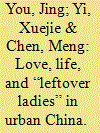| Srl | Item |
| 1 |
ID:
112729


|
|
|
|
|
| Publication |
2012.
|
| Summary/Abstract |
Corruption is one of the most pervasive obstacles to economic and social development. However, in the existing literature it appears that corruption seems to be less harmful in some countries than in others. The most striking examples are well known as the "East Asian paradox": countries displaying exceptional growth records despite having thriving corruption cultures. The aim of this paper is to explain the high corruption but fast economic growth puzzle in China by providing firm-level evidence of the relation between corruption and growth and investigating how financial development influences the former relationship. Our empirical results show that corruption is likely to contribute to firms' growth. We further highlight the substitution relationship between corruption and financial development on firm growth. This means that corruption appears not to be a vital constraint on firm growth if financial markets are underdeveloped. However, pervasive corruption deters firm growth where there are more developed financial markets. This implies that fast firm growth will not be observed until a later stage of China's development when financial markets are well-functioning and corruption is under control. Furthermore, the substitution relationship exists in the private and state-owned firms. Geographically, similar results can be seen in the Southeast and Central regions.
|
|
|
|
|
|
|
|
|
|
|
|
|
|
|
|
| 2 |
ID:
182759


|
|
|
|
|
| Summary/Abstract |
The population in urban China has shown rising age at first marriage and declining marriage rates, especially among college educated professional women who are in their late 20s or their 30s. We investigate the determinants of marriage formation for urban women aged 27 or above who tend to be termed “leftover ladies”. We estimate a recursive mixed-equation model to describe correlated profiles of career, education and marriage. Conventional social norms on gender, especially patriarchy, still prevail. Factors that are not favorable for a conventionally wifely role reduce women's likelihood of marriage. In particular, we reveal a “marital college-discount” of college education. It reduces the probability of marriage by 2.88%–3.6% and a postgraduate degree further oppresses it by 8.4%–10.4%. Favorable characteristics such as facial attractiveness only raises the likelihood of marriage formation for non-college educated women, while pushing up non-marriage probabilities for women with at least college degrees.
|
|
|
|
|
|
|
|
|
|
|
|
|
|
|
|
| 3 |
ID:
133184


|
|
|
|
|
| Publication |
2014.
|
| Summary/Abstract |
This paper seeks new insight into the reasons for persistent hardship in some Chinese rural households from the perspective of assets, stressing the long-run implications of shocks and risk on households' agricultural asset holdings. Households show a tendency to hold onto substantial savings to cope with possible negative shocks, and are predisposed to specialize in low-risk low-return agriculture under ex ante credit constraints and the fear of low welfare outcomes if production plans should be unsuccessful. Overall, households' responses to uninsured shocks and risk cause inefficiencies and deficiencies of investment in agricultural asset accumulation. Multiple equilibria in the dynamics of household agricultural assets as well as under-investment as a response to risk make some households less able to earn income above the poverty line and keep them trapped in long-term low-equilibrium asset poverty.
|
|
|
|
|
|
|
|
|
|
|
|
|
|
|
|
| 4 |
ID:
159030


|
|
|
|
|
| Summary/Abstract |
We investigate the determinants of firm corruption and highlight contagious diffusion of firm corruption under mutual influences of firms' past corrupt history and between peers. The analysis finds that firms' decision-making on engagement in corruption can be affected vertically by their own past experience of bribing bureaucrats and horizontally by the contagion effects of neighbors' observed malfeasance, while there is substantial regional heterogeneity. Moreover, these horizontal contagion effects are nonlinear depending on the distance between neighbors. We also identify three channels underlying “osmosis” of corruption: firms' geographic networks, information exposure, and local marketization. The strongest contagion effect appears in the eastern region, indicating that petty firm corruption can develop into a systematic phenomenon. More practical anti-corruption policies call for cooperation in design and implementation across administrative areas.
|
|
|
|
|
|
|
|
|
|
|
|
|
|
|
|